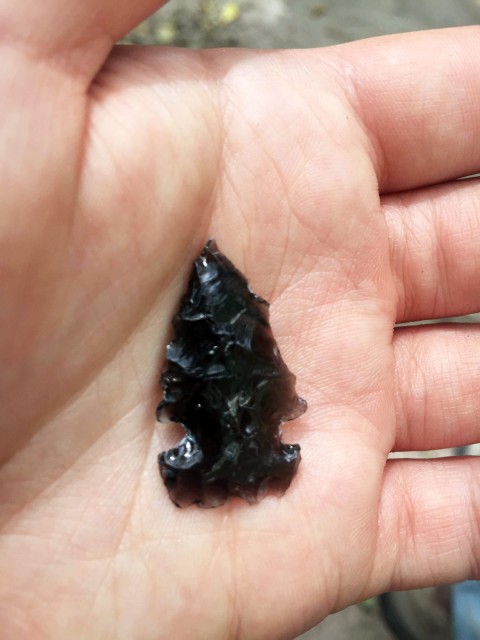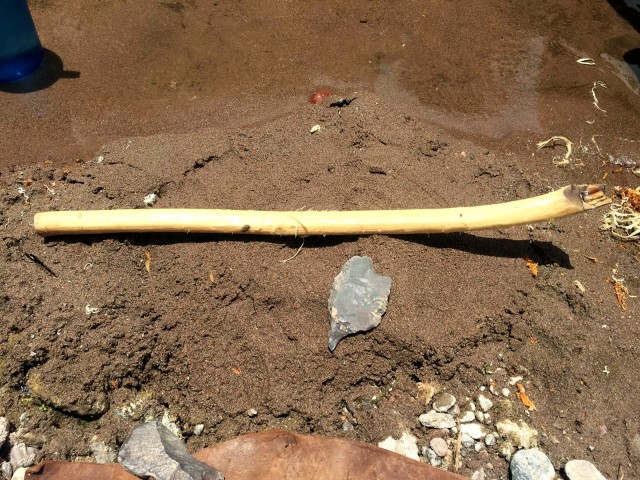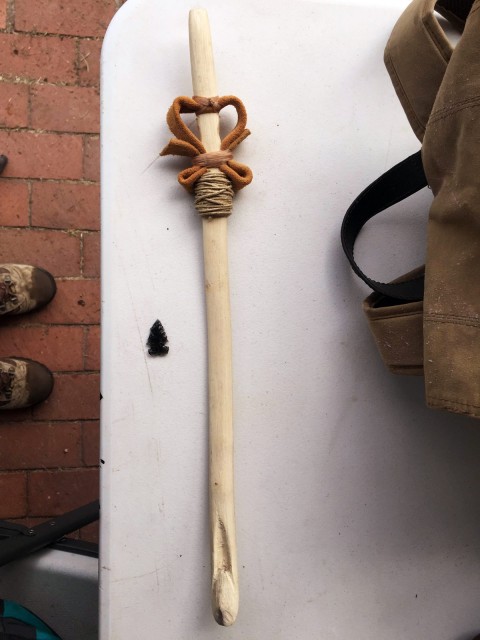- Home
- >
- Preservation Archaeology Blog
- >
- Construction of Ancient Weapons
Devinne Fackelman, Grand Valley State University
A few days ago, I was given the opportunity to construct two common and well-used ancient weapons: a dart point (kind of like an arrowhead, but not used with an arrow) and an atlatl. I had flintknapped and thrown an atlatl dart in the past, but not to the extent that this experience provided.
Our instructor Allen, another student, and I went down a trail to the San Francisco Hot Springs to make our points and atlatls. After the one-mile hike down into the river next to the springs, I knew that day was going to be eventful.
Allen told us at the beginning of the day that he wanted us to have an authentic experience in making our weapons using only stone tools, a difficult but not impossible task. We began by making our dart points. Allen explained to us how to make flakes from local obsidian stone that he had collected. Making flakes requires the flintknapper to strike a core with a hammerstone in order to make a flake come off the core. Multiple hits and one small cut later (the flakes are extremely sharp!), I had my dart point.

What baffled me about flintknapping was the time and energy that it takes in order to perfect the art. The arrowheads found on various sites throughout the United States took a lot of time and effort to make, and a lot of practice was needed in order to become efficient in the art of flintknapping and to develop lethal weapons for hunting game—and even enemies.
Speaking of weapons, we next constructed our atlatls. Although the arrowhead was difficult, I found the atlatl much more difficult to make. We used flakes Allen had flintknapped to scrape away the bark on oak sticks in order to get to the wood that would become our atlatls. Constructing atlatls from oak is difficult because you have to wet the bark in order to scrape it off. Once all of the bark is scraped off, the future atlatl looks like this.

I soon found that scraping off the oak bark was not the most difficult part of this task. I had to “saw” a notch into the back end of the atlatl where the dart would be placed, and grind grooves into the front end of the atlatl where my fingers would go to hold the dart. Using flakes and ground stones to do this, I found that it took strength and patience in order to complete my task.
Finally, after completing my grooves, we attached leather handles for my fingers, and ta-da! My first atlatl was completed!

I learned a valuable lesson in doing experimental archaeology. The ancient people that made these weapons had a goal for their completed work, and they were hard-working individuals who took time and energy in their days to ensure their survival. These people looked at their landscape and found ways to make tools that would help them prosper. This reminds me of the resourcefulness of humanity, and it has given me great respect for people of the past. I hope to take these lessons into my future career.
One thought on “Construction of Ancient Weapons”
Comments are closed.
Explore the News
Related to This
-
Project Hands-On Archaeology
very impressive,Devinne! Makes one realize that we’re not the originators of “high tech”!